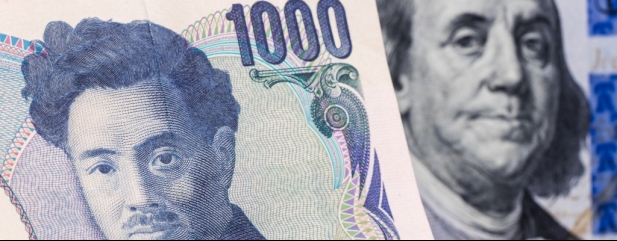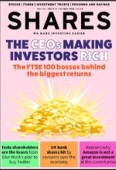Archived article
Please note that tax, investment, pension and ISA rules can change and the information and any views contained in this article may now be inaccurate.
Japan shock: Why the yen’s plunge really matters

In 2013, Kyle Bass, the Texas-based founder and manager of hedge fund Hayman Capital, gave an interview in which he tersely stated, ‘I would buy gold in yen and go to sleep for 10 years.’
The case for short yen/long gold was based upon the tattered state of Japan’s public finances, the country’s weak demographics and how the Bank of Japan had got itself into a trap. Any attempt by the central bank to tighten monetary policy would only lead to an economic slowdown and – in turn – lower interest rates and more money creation via quantitative easing.
Bass also asserted it was too early to invest in Japan. That may not have worked out so well, since the Nikkei 225 index is up by around 150% since the start of 2013, although such returns still lag the headline US indices, in local currency terms.
More intriguingly still, the hedge fund manager’s thesis on the yen and gold has started to play out quite spectacularly. Gold did nothing in yen terms for six years, but it advanced by 70% in the next three years (or, in other words, the yen lost 70% of its value relative to gold over that period).
The questions to ask now are 1) Why has the yen suddenly started to break down? and 2) Are there any lessons that investors can draw for Western markets?
Land of the sinking currency
It is possible the time it took the gold/yen trade to play out tested the patience of even the most committed portfolio builder. But Tokyo’s main index has started to lose momentum as the Bank of Japan has debated tighter monetary policy and prime minister Fumio Kishida has moved away from the ‘Abenomics’ policy of his predecessor, Shinzo Abe.
Moreover, Japan’s currency has started to tank, even as Japanese government bond yields have started to rise. The yen has fallen to ¥128 to the dollar, a mark last seen in 2002.
That seems slightly counter-intuitive as normally higher yields would attract more capital. But Japanese government bond yields are rising more slowly than they are in the US, where the US Federal Reserve is talking a much tougher game. As a result, the dollar is attracting capital and the yen is plunging.
In Washington, Federal Reserve chair Jay Powell is talking about inflation more than anything else right now. Markets are listening and pricing in an 80% chance of a 3% Fed Funds rate by the end of 2022. The prospect of a second American attempt at quantitative tightening and a withdrawal of quantitative easing is also upon us.
In Tokyo, inflation may stand at a 42-month high, but the headline rate is still only 1.2%, below both the Bank of Japan’s 2% target and miles below the prevailing 8.5% headline rate in the US.
As a result, Bank of Japan governor Haruhiko Kuroda is still in no rush to raise the headline base rate from -0.1% and remains committed to a policy of qualitative and quantitative easing with yield curve control, whereby it will permit 10-year Japanese government bond yields to move up or down by 25 basis points (0.25%) from its 0% target.
Collision course
The result is the Bank of Japan has a balance sheet that exceeds 100% of GDP. But despite all that effort, inflation is stubbornly below target and, worse, the 10-year Japanese government bond yield is approaching 0.25%, to perhaps set the Bank of Japan and bond market vigilantes on a collision course.
This potential contest is one that all Western central banks will be watching. The Bank of Japan is yet to pull the trigger on rate rises or quantitative tightening and already the bond market is moving ahead of it, amid fears of inflation.
The currency market is perhaps taking the view any tightening of policy will not last long, in keeping with prior attempts in Japan and the US between 2017 and 2019, as the Japanese economy slows and financial markets wobble, to force a rapid backtracking on quantitative tightening and interest rates.
Meanwhile gold bugs lurk, awaiting their moment. The Bank of Japan and the yen may be test cases for the view that central banks are in a corner of their own making after more than a decade of experimental policy. Either tighten to tackle inflation and indebted economies and leveraged financial markets turn turtle or do nothing and see inflation do the damage instead.
Important information:
These articles are provided by Shares magazine which is published by AJ Bell Media, a part of AJ Bell. Shares is not written by AJ Bell.
Shares is provided for your general information and use and is not a personal recommendation to invest. It is not intended to be relied upon by you in making or not making any investment decisions. The investments referred to in these articles will not be suitable for all investors. If in doubt please seek appropriate independent financial advice.
Investors acting on the information in these articles do so at their own risk and AJ Bell Media and its staff do not accept liability for losses suffered by investors as a result of their investment decisions.
Issue contents
Feature
Great Ideas
- Find out why WH Smith remains an exciting Covid recovery play
- A tight power market continues to drive earnings upgrades at Drax
- Why we’re sticking with formidable long-run performer Fidelity Special Values
- 2022 should prove a pivotal year for GlaxoSmithKline
- Shares in comparison website owner Moneysupermarket are too cheap to ignore
- This is how to find a winning combination of cheap stocks and inflation protection

 magazine
magazine












